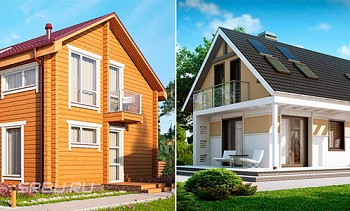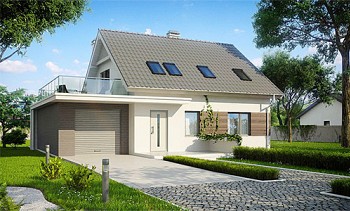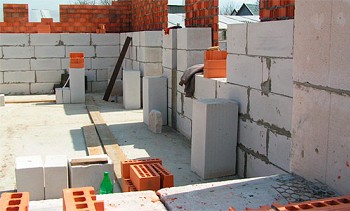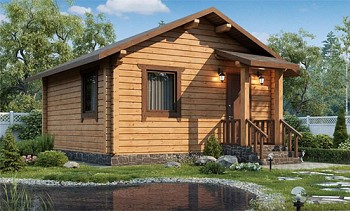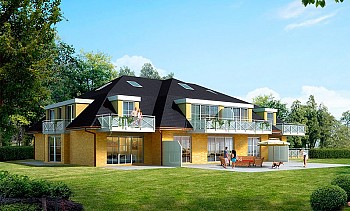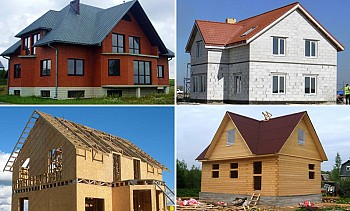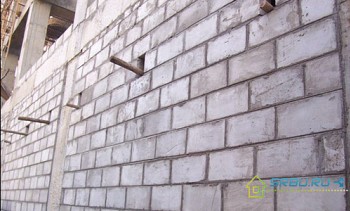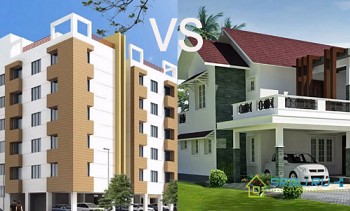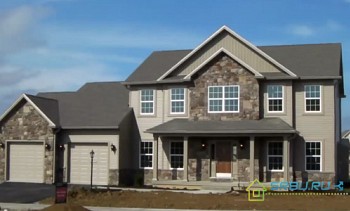Which house is better to build - choose materials and type of construction
As they say - to plant a tree, raise a son and build a house. Minimum program for the stronger sex. The desire to fulfill it is often very great - especially the part where the house is mentioned. But what to do if you have no idea which house is better to build and what materials to choose for it? Fold the walls of brick or ceramic blocks, or maybe quickly mount them on a frame with insulation inside? At the same time, construction technologies are different, and the cost of work and materials will differ. Well, I will try to answer all questions in order. Let's start with the first one.
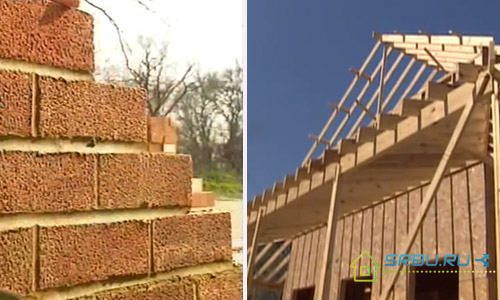
- What and how are private houses built today?
- And what are heavy and light materials?
- How long will my house stand?
- And what is cheaper to build a house from?
- How long will the construction take?
- If I have a small plot, then what is the best way to build a house from?
- In which case can construction work be paid in installments?
- Which house is less afraid of fire?
- What material walls will be impregnable?
- Which project to take - ready or individual?
- Which house will be warmer?
- What material makes an environmentally friendly and comfortable home?
- What are the pros and cons of heavy and light houses?
- Comparative characteristics of houses made of various materials
- Video. What to build a house from
What and how are private houses built today?
Two main construction technologies are now popular. The first of them is brick or block monolithic masonry. This is a “wet” method, as a solution is kneaded during operation. The second (“dry”) construction method involves assembling the house, as a designer, from large elements. The main part of the walls is insulation. In principle, both technologies make it possible to obtain strong and completely livable structures.
The main thing is to choose correctly what to build from, as well as who will build. This is especially true for frame houses. It is important here not to miscalculate with the choice of materials of proper quality, and builders to find sensible who will not screw up anything. Therefore, do not rush - if it is not so easy to spoil a house from heavy materials, then in the case of light materials it is better to measure seven times, and to build is so ideal.
And what are heavy and light materials?
Natural question. And the answer is simple - heavy, otherwise massive, materials are also called stone. These include foam concrete and aerated concrete blocks, ceramic blocks. Well, a brick, of course. Such a house requires a powerful reinforced concrete foundation, usually a strip one. Overlappings are mainly done with frequent ribs, also of reinforced concrete. Sometimes wooden beams and floors are used.
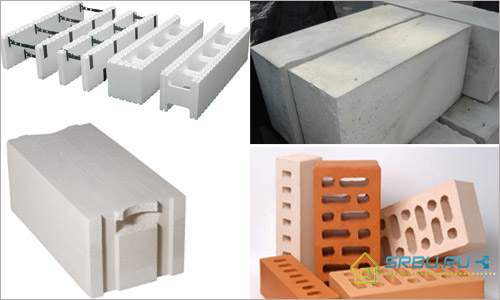
The main materials from which heavy walls are built are: ceramic bricks and blocks, foam blocks, gas blocks, thermal blocks.
If they say that the walls of the house are made of light material, then they mean either a panel-panel house or a frame one. The latter consists of a frame (metal or wood), a layer of insulation (mineral wool or polystyrene foam) and a layer of sheathing material. The light house also has a lightweight foundation - slab, columnar, strip. Overlapping can be made of wood. Such housing is being built quickly and simply, unlike a heavy house.
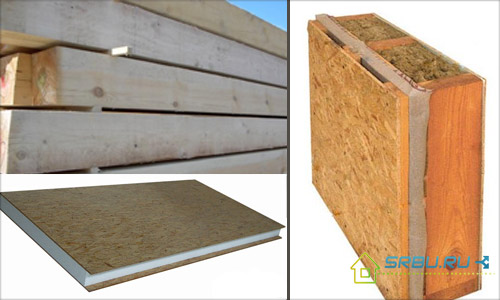
Lightweight walls are built from materials such as: self-supporting insulated panels, wooden and metal insulated frames, wooden beams.
How long will my house stand?
The answer is: if the material is chosen correctly and without marriage, and the builders strictly adhered to the technology, then for three generations of the house (and any) will be enough. And this is about 75 years old, no less. With a good repair, it will last longer. A house made of heavy materials, well built, can last more than a century. After all, the material of its walls is very durable.To achieve this result, moisture protection and a solid foundation must be provided. Keep in mind: if the floors are made of wood, then after 50 years they will begin to require replacement.
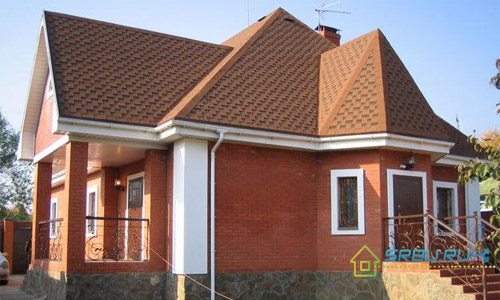
A house made of heavy materials will last a long time and is a good investment.
The frame house, as a rule, serves from 25 to 50 years. Its lifespan depends on the quality of the frame, as well as the material for thermal insulation and the features of its installation. The wood for the frame should ideally be absolutely dry and free from flaws, the insulation should be of high quality and well closed from water. Repair of a frame house is usually carried out only outside - the covering material and insulation are replaced.
So: if you want children and grandchildren to live in the house you built, then choose brick or aerated concrete blocks for construction. These materials are durable. Not a single frame house will stand so much as a brick one.
And what is cheaper to build a house from?
You understand that a house that lasts a long time will cost more. For example, today there are frame houses that can, according to calculations, stand for 100 years. But they are expensive to build - no cheaper than brick. And on average, of course, building a house with light walls will be less costly. They use materials such as mineral wool, polymer membranes, polystyrene foam, drywall, oriented particle boards, wood. The wall is not too thick, and the cost of its square meter is about $ 35. If you use SIP panels, then it will drop to $ 30. Having added an inexpensive lightweight foundation and transportation costs (also minimal), we get a total cost of up to $ 240 per m² of room.
The cost of a heavy house depends on the material used. The cheapest way is to use cellular concrete, the most expensive is ceramic blocks. Putting piece material on a solution is a laborious task, so builders will have to pay 40% of the price of materials, no less. To build a 38 cm thick brick wall will cost $ 65 per m². Aerated concrete wall will cost less ($ 55 per m²), and ceramic - more expensive ($ 70 per m²). The massive foundation and transportation of heavy materials will cost a pretty penny. As a result, the average total cost per square meter will be up to $ 600.
So: I’m telling you from which it is profitable to build a house: building a heavy house is more expensive than a light one, 2 or even 4 times. Therefore, if you have limited means and do not want to get into debt, choose a house of light materials. You will be able to do it more quickly and finish more interesting. To date, aerated concrete blocks are very popular, which also allow you to save a little compared to brick.
How long will the construction take?
Sometimes the answer to this question is crucial. Well, I will not dissemble - you can’t quickly lay out heavy walls. It will take a year to build, no less. And this is for a not very big house (up to 150 m2) Think for yourself: a month will be spent on the foundation, two months - on the walls.
Put the floors, put roof windows, insulate, install equipment - another 3 or 4 months. Well, the finishing work will take several months. Therefore, even if you begin to build, the snow will barely melt, it is unlikely to populate by the New Year holidays. Have a housewarming party next summer.
But light walls due to the lack of "wet" work are not built for long. Such a house can be built in 1-2 months. If all prefabricated elements are prepared, then the construction is just lightning fast. The foundation will be ready in 2-4 weeks. And then they assemble the frame, put insulation and sheathe the house, then carry out internal work. Everything takes about a month to two, depending on the dimensions of the house.
And if you take ready-made panels, then the house can be delivered in 1-2 weeks. In both cases, we mean all the work before finishing. It can be started immediately without waiting for the walls to dry or shrink. In short, start in the spring - just populate in the fall.
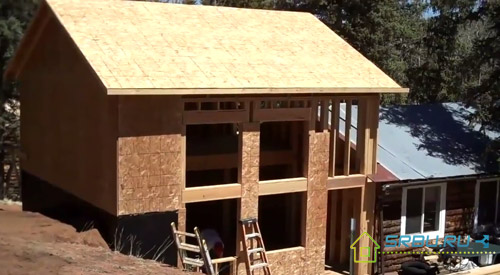
If, when choosing what to build a house from, the main criterion is speed, then a light house is the best option.
If I have a small plot, then what is the best way to build a house from?
Keep in mind that heavy houses and scope require a solid one. It is necessary to allocate a lot of space on the site, not only for the foundation, but also for the warehouse, mixing concrete, carpentry. Somewhere it will be necessary to pile up a bunch of garbage - broken brick, formwork parts, empty bags with boxes. To do this, prepare an area equal to the house itself. But for a frame building, so much space is not required - you just need to put somewhere a compactly packed set of parts. You do not have to look for where to knead the solution and where to form the formwork. And from SIP-panels, it’s possible to build from the wheels altogether.
So: If you already have a kindergarten on the plot and everything is put in order, it is better to stay on a light house that does not require a lot of space during construction. A house made of heavy materials is more practical to build on an empty plot.
In which case can construction work be paid in installments?
If you don’t have all the necessary amount at once, you can invest in each stage of the work one at a time. True, the longer it takes to invest, the more the total amount will be obtained. Therefore, if possible, it is better to pay all at once.
When building a heavy house, it is quite possible to invest money gradually. First build a box, and then take a break at any time. As soon as the required amount appears, you can continue. With an easy house, this option will not work - you will have to pay immediately for the entire set of material, the assembly of the house and the installation of communications. Only with interior decoration can you wait a while, starting it when the right amount is available.
Which house is less afraid of fire?
Want to know what material to build a house that is not afraid of fire? I'll tell you now. Fire resistance, based on fire standards, is different for light and heavy houses. So, heavy walls in combination with reinforced concrete ceilings give II class of fire resistance, and with wooden - III class. Heavy materials contribute little to the spread of fire, so neighboring houses can be built at a distance of 8 meters.
Light houses, which are based on a wooden frame, are not so resistant to fire. Their fire resistance classes are IIIa, IIIb and IV. This is natural - a tree, even coated with fire-resistant impregnation, will catch fire and collapse faster than brick, for example. And membranes made of polymers and polystyrene foam insulation can also poison, releasing toxins when heated. Therefore, such a house should be 10 or 15 meters away from neighboring buildings.
So: heavy houses light up harder and are not so dangerous in a fire. And one more thing: if your site has an elongated and narrow shape, firefighters may not allow building a frame house. After all, a safe distance to neighboring buildings will not be ensured. But it all depends on the norms of your country of residence.
What material walls will be impregnable?
That is: from what to build the walls of the house so that unwanted guests do not damage them and do not penetrate inside? My answer is that it is not so easy to destroy a wall made of heavy material. And you won’t take it with your bare hands, and with a tool it will take a lot of time. A hole in this wall will not harm the house as a whole, and you can close it with the same brick.
But with a light house, the situation is different, and its strength depends on the skin material. In principle, any sheathing material can be sawn with the same grinder. But there is still a heater under it, which needs to be pulled out, and then also a drywall layer cut. It’s bad if the wall is damaged and the frame is touched. But still, the repair is quite possible.
So: if you want your house, which stands apart, to be inaccessible to intruders, make its walls heavy.
Which project to take - ready or individual?
A heavy house can be built on any project - there are no restrictions. Many people choose exclusive ordering a project in accordance with all their wishes. But there are pluses in the turnkey solution.For example, you can be shown a house built on this project, and you can even see it from the inside. Finished projects can be found in numerous online directories.
A light house is usually built according to a finished project. It can be purchased from a specialized company along with a set of elements for assembly. And you will finish to your liking. But if you don’t like a typical house, then for an additional fee you can well order an individual project. But at the same time, the general requirements for frame housing construction must be observed.
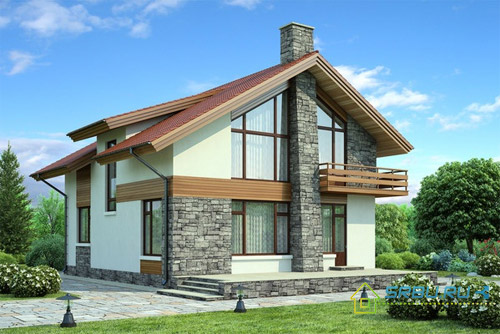
The finished project will cost less. But with increased requirements for the design of the house and its layout, the typical design of the frame building is unlikely to satisfy you.
Which house will be warmer?
Heavy materials for walls have a thermal inertia. In other words, if such a house is thoroughly frozen, you will have to warm it for a long time, and inside the tooth will not get on the tooth for a long time. But then, when the heater is turned off, the heated walls will transfer heat to the house. Therefore, in such a room it is quite comfortable, even if the temperature in the street changes sharply.
Light houses mainly consist of a heater that is not able to accumulate heat. As soon as you turn on the heater in such a house, you will immediately feel the effect. But when you turn off the heat source in the room, it instantly becomes cold. Therefore, if the temperature outside the window changes dramatically, you will immediately feel it. It must be regulated using a heating system. In the summer, in the frame house it is not hot - because its walls do not heat up.
So: warming up a light house is quick and easy. When deciding what to build a country house to be used periodically, opt for a frame structure. Accordingly, a house with heavy walls that slowly heat up and cool just as slowly is best used for permanent residence. In the event of an accident, if the heating is turned off, it will be warm for a long time in such a house.
What material makes an environmentally friendly and comfortable home?
As for comfort, living in a light and heavy house is not bad. In both, temperature and humidity will be quite suitable, and at any time of the year. The air in the rooms will remain clean and fresh. Naturally, all this will be ensured only by using environmentally friendly materials and observing the construction technology. Particular attention in a stone and in a frame house, pay attention to proper ventilation.
For heavy houses, it is very important not to let moisture get on the surface of the walls, otherwise a fungus will settle on them. By the way, the warm wall will stop keeping warm. Therefore, the vapor permeable finish layer should be of proper quality.
As for the light house, in no case do not sheathe it inside the chipboard. After all, particle boards have phenol in their composition, which is dangerous to human health. It is better to take drywall sheets and sheathe the walls with them in two layers.
What are the pros and cons of heavy and light houses?
Frame house
Advantages:
- It will cost inexpensively.
- The house is being built very quickly.
- On the site you do not need to allocate a lot of additional space.
Disadvantages:
- It does not last as long as a house made of heavy materials.
- It is impossible to stretch financing.
- For fire safety, a large distance from other structures is necessary.
- Damaging the walls of such a house is easier than brick or block.
Heavy house
Advantages:
- He has served for a very long time - at least 100 years.
- Money in construction can be invested in parts.
- The walls of the building are very durable.
- The building is not afraid of fire.
- Any project can be used - at least typical, at least exclusive.
Disadvantages:
- To build such a house is quite expensive and long - you cannot handle it in one warm season.
- The construction site should be large enough.
I think now you can decide which materials, which technology and which project to use. I wish you a successful construction!
Comparative characteristics of houses made of various materials
| Wall material | Durability, years | Construction time, months | The need for insulation | Necessity and type of exterior finish | Costs in%, brick taken for 100% |
|---|---|---|---|---|---|
| Walls made of heavy materials | |||||
Ceramic brick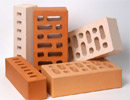 |
More than 100 | About 12 | Necessary | Desirable | 100 |
Ceramic block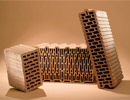 |
More than 100 | Not less than 6 | Depends on the thickness of the block, wall and region of residence | Desirable | 93 |
Aerated concrete blocks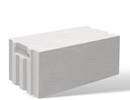 |
Up to 100 years or more, the main rule is to prevent the walls from getting wet. | Not less than 6 | Mostly used, but depends on the region of residence and the thickness of the block | Compulsory and desirable vapor-permeable | 70 |
Foam blocks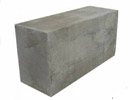 |
About 100 years | Not less than 6 | Necessary | Required, any type | 90 |
Thermoblocks (monolithic concrete in polystyrene foam formwork)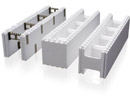 |
Minimum 35 (first houses built in 1976) | 1 - 3 | Not required | Required, any type | 50 |
| Lightweight Walls | |||||
Wood - timber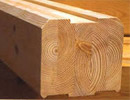 |
Up to 100 or more, depends on the quality of the material and home care | 2 - 6 | Not required | Basically, it is not required and depends on the region of residence, but antiseptic treatment is regularly needed. | 60 |
Wooden insulated frame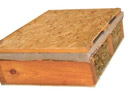 |
At least 25, but will depend on the quality of the material and assembly | 1 - 3 | Not required | Required, any type | 40 |
Metal insulated frame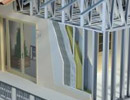 |
At least 25, depending on the quality of the insulation | 1 - 3 | Not required | Required, any type | 40 |
SIP panels (expanded polystyrene in OSB sheathing)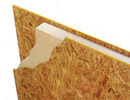 |
Not less than 25 | from 1 | Not required | Required, any type | 30 |

